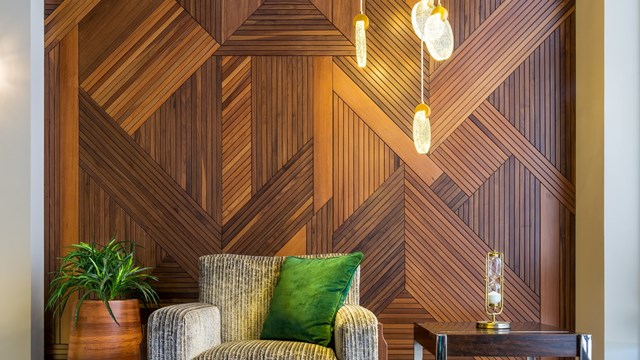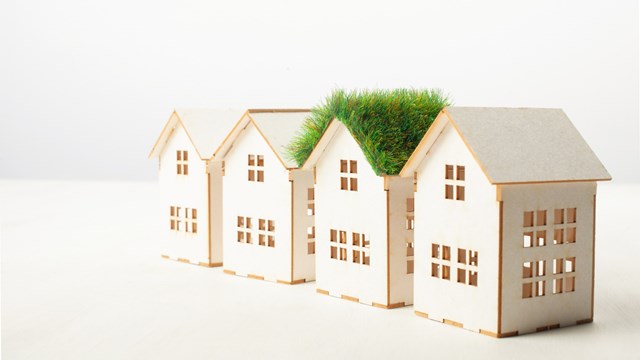
Kitchens and bathrooms are the hardest, most expensive rooms in an apartment building or business - especially in Manhattan - to install, renovate or remodel. A variety of skills, trades and materials come into play; the job requires extra considerations for gas, water, and electric lines, and mistakes are costly. The kitchen, where one not only prepares food but also entertains family and company, is an especially important room that requires careful aesthetic considerations.
Whether you're an individual looking to increase the resale value of your apartment, or a board member looking for ways to attract more people to your building, great care must be taken when renovating both kitchens and bathrooms to the layout and design of the space, as well as décor, color schemes, and more. Before beginning the job, you must find the right contractor and pre-select the right materials to ensure timely and affordable completion.
Like a lot of things, kitchen or bath renovation in Manhattan is more costly than it is just about anywhere else. In fact, it's nearly impossible to install a quality galley kitchen for under $50,000, according to Colette Whitney, an interior designer and decorator specializing in kitchens and baths and the president of Whitney Interiors, Ltd. Her Manhattan-based design firm offers consultations as well as interior design and decorating services. "That's the base," she says, "and that's using middle-of-the-road cabinetry and standard appliances, like GE or Kitchenaid. It includes a licensed contractor and stone countertops. $50,000 to $60,000 is your range for a middle-of-the-road kitchen."
The price range for a high-end kitchen job, which would include cabinetry and appliances from such upscale manufacturers as Sub-Zero, Dacor, Thermador and Wolf, will cost between $80,000 and $120,000. That, Whitney says, applies to a 7-by-14 foot long galley kitchen, a Manhattan staple.
When it comes to a 5-by-7 foot bathroom, she continues, it's tough to do the job for less than $30,000. "The contractor alone will cost you $20,000," Whitney adds. "The only leeway you have is the materials. You add the price of materials to the price of the contractor. And you can't do the materials for a bathroom for less than $10,000." Most renovators, she points out, opt for high-end materials - faucets, tiles, tubs, sinks, cabinets and lighting - that pushes the cost into the $40,000 to $50,000 range.
Whitney suggests working with a designer. Contractors, she says, are not responsible for making aesthetic decisions but rather for implementing designs. Therefore, hiring a designer before even visiting the contractor or selecting the materials is an effective method of determining a price. After paying a flat fee exponential to the scale of the job, the client gets a complete forecast, detailed in writing, of what the project will entail. Each step - demolition, construction, plumbing, electrical, carpentry, cabinetry, tile and stone, mirror and glass, lighting and electrical - is broken down by trade.
The client, after giving contractors the basic floor plans and all the project details, can get bids before even committing to buying the materials and appliances. That will establish in advance the labor cost, which - especially in Manhattan - composes a significant portion of the bill. "Labor and materials for a kitchen usually run about even, unless you're getting very high end appliances and high-end cabinetry," Whitney says. "Usually, a good rule of thumb for a kitchen is approximately 40 to 50 percent labor and 50 to 60 percent materials. In bathrooms, the labor composes approximately 70 percent of the price."
A certified kitchen and bathroom designer, who is familiar with what goes into those two rooms, knows what information to give contractors in order to formulate a comprehensive labor bid, Whitney says. Although a designer costs more up front, she notes, the client will get a much more accurate bid from contractors by using one. "You'll know exactly what you're getting. By using a designer you actually save money, because you don't make the mistakes that you're going to make when you don't use a designer," she advises. Kitchens and bathrooms, she points out, are highly specialized areas, about which even architects and interior designers don't know all the details.
The resale value of an apartment is the most common reason people undertake this challenging and costly enterprise. "The kitchen and the bathroom are the two areas that people do not want to deal with when they buy an apartment," Whitney confirms. The former, in which people typically spend more time, has greater resale-boosting potential and is redone more often. Worn out or outdated appliances also can justify an overhaul.
Since remodeling a kitchen or bathroom involves just about every major trade, the work must be begun and completed in sequence to avoid costly - and inconvenient - downtime. The job also requires knowledge and coordination on the contractor's part to keep things moving.
Depending on the relative complexity, an average job takes two to three months to complete. Most pros recommend that you get a time estimate, since preordering supplies and having them either on-site or waiting in a warehouse is a time-saver. Otherwise, according to Whitney, "once the contractor stops the job, it loses the momentum, and then it's hard to get them back, because most of the people who do this work specialize in small jobs," she explains.
When seeking the right contractor for the job, Whitney recommends going through a designer or your building manager, either of whom often maintains a reputable list of contractors. Designers and architects also will know contractors who specialize in that kind of work. It's up to you, however, to actually hire the contractor.
An array of products, materials and supplies are available for renovation jobs large and small, modest to opulent. Some of the high-end industry players include Wolf, Sub-Zero and Viking, Thermador, DCS and Dacor. New products are rolled out at trade shows like the annual National Kitchen and Bath Show, which will be in Orlando this April. Barbara Weisf of Appliances Outlet at Dial-a-Brand in Merrick, Long Island, cites the professional ranges, the new wall ovens and the selection of hoods now available as some of the more recent advances in kitchen technology.
She says by February Miele will introduce a new, 30-inch wall oven, the first of its kind in the United States. It will feature single, double, and warming doors in black, white, and stainless steel.
Some of the other products for this year include rotisserie ovens and new models manufactured by Wolf that have a tier on the door from which the tray slides out into the bottom rack, preventing it from wobbling. Wolf also makes a 36-inch wall oven under the counter, as does Dacor, which will match up to 36-inch cook-tops.
For refrigeration, the old-fashioned look is coming back. Weisf says Northstar makes refrigerators in different colors that resemble the old Coke machines. "We're going back into mostly stainless...we have overlays instead of just frame units on Sub-Zero and Viking refrigeration."
Weisf says sealed burners, although they are not entirely new, are available for cook-tops. But, she adds, "Now you have some that have a double burner for each one, with a simmer on the inside and a regular flame on the outside. We [also] have electric cook tops that can be used for wok cooking because they have such accurate power." Weisf cites Wolf's electric five-burner, which has a special wok-cooking option. That, she says, is something that has never been done before.
Dishwashers now are totally integrated. "You don't have to see dishwashers at all - you would never know they're a dishwasher," Weisf says. "They're just totally integrated, covered."
When it comes to bathrooms, she continues, "it certainly has to do with accessorizing: whirlpools, shower enclosures, frosted or plain or as exotic as you'd like. There are fixtures for both the sinks and the tubs. The selection is fabulous."
Where popularity is concerned, Weisf says stainless steel still is a strong seller. Companies like Viking now make color ranges that match the range, the dishwasher and the refrigerator. All companies make wall ovens in stainless black or white. Viking, she says, makes wall ovens in colors. "You can have a complete Viking kitchen in any color you choose." Ductless hoods that can be used over pro ranges also are popular.
Although Weisf points out that "these are geared for high-end apartments and upscale kitchens," Whitney points out that you can also find more affordable equipment from certain dealers located in Pennsylvania. Today's kitchen or bath remodeler is armed with many options, expert advice, and an ever-expanding array of equipment and appliances. With the help of an experienced designer and a reputable contractor, you can soon be cooking with gas - without getting all wet.






Leave a Comment